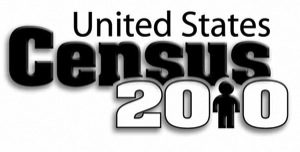
In the past being gay or lesbian in Jacksonville, Florida was not something you openly talked about. Most people kept their sexuality to themselves, remembering all too well the dangers of being openly gay or lesbian when an LGBT church was bombed in the 1980s. But today it is different. Today there are eight churches that openly welcome LGBT worshipers. One even caters to gay and lesbian couples with children.
These changes may surprise a lot of us, especially in a city where churches that have long condemned homosexuality remain a powerful force. But as demographers sifted through recent data released from the Census Bureau, they found that Jacksonville is home to one of the biggest populations of LGBT parents in the country.
The data also shows that child rearing among same-sex couples is more common in the South than in any other region of the country. LGBT couples in Southern states like Arkansas, Louisiana, Mississippi and Texas are more likely to be raising children than their counterparts on the West Coast, in New York and in New England.
This pattern, identified by Gary Gates, a demographer at the University of California, Los Angeles, is also notable because the families in this region defy the stereotype of mainstream LGBT America; white, affluent, urban and living in the Northeast or on the West Coast.
Bob Witeck, chief executive of Witeck-Combs Communications, which helped market the census to LGBT people, said, “We’re starting to see that the gay community is very diverse. We’re not all rich white guys.”
According to Gates, black and Latino gay or lesbian couples are twice as likely as whites to be raising children. They are also more likely than their white counterparts to be struggling economically.
One of the theories offered is that a large number of gay or lesbian couples, possibly a majority, entered into their current relationship after first having children with partners in heterosexual relationships. “That seemed to be the case for many blacks and Latinos in Jacksonville, for whom church disapproval weighed heavily,” added Gates.
Darlene Maffett, 43, a Jacksonville resident, who had two children in eight years of marriage before coming out in 2002 said, “People grew up in church, so a lot of us lived in shame. What did we do? We wandered around lost. We married men, and then couldn’t understand why every night we had a headache.”
Gates continued, “Gay men who have children do so an average of three years earlier than heterosexual men, census data shows.”
Even before Maffett moved to Jacksonville, she had been attracted to the city. It had a LGBT-friendly church and in 2003, she spent her Sundays driving 90 minutes each way to attend services.
Maffett appreciated the safety of the church in Jacksonville. Her father was a Baptist preacher, and her former husband was a member of the Church of Christ, so she knew how unwelcoming some churches could be for LGBT people. Even so, she felt little connection to the LGBT congregation in Jacksonville — mostly white, male and childless.
Maffet explained, “The pastors were all white guys. They were nice to us, but we weren’t really feeling that they knew how to cater to kids.”
The Census Bureau estimated that there were 581,000 same-sex couples in the United States in 2009. The bureau does not count gay singles.











